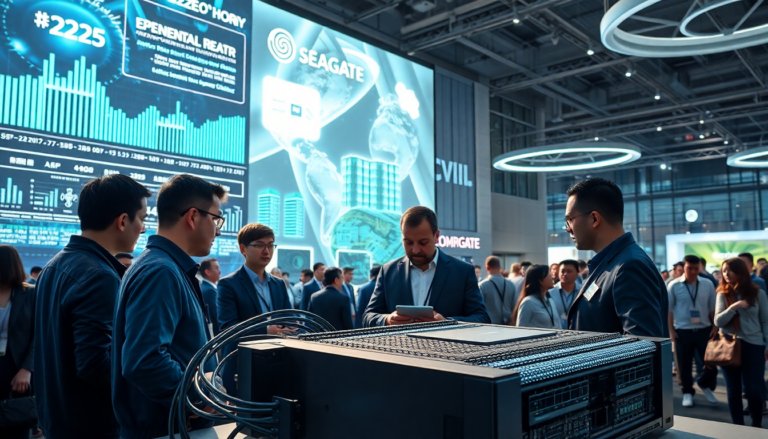Argomenti trattati
Data is the lifeblood of today’s technology, but with that necessity comes a pressing demand for effective storage solutions. It’s fascinating to see how the landscape of data storage is shifting—much like the way cryptocurrency altered the GPU market. At Computex 2025, Seagate unveiled its take on the burgeoning challenge posed by AI, hinting at a potential crisis in carbon emissions alongside the need for advanced storage technologies. It’s almost like we’re standing at the edge of a precipice, looking down at a future that’s both exciting and daunting.
The burgeoning data crisis
At the heart of this transformation is a staggering statistic: Seagate estimates the entire hard drive industry can produce only 1 to 2 zettabytes of storage yearly. Now, just to put that into perspective, one zettabyte equals one trillion gigabytes. Yet, the amount of data projected to be generated vastly overshadows this. Imagine a world where every interaction, every transaction, and every digital footprint contributes to an uncontainable data tsunami. It’s overwhelming, to say the least, and companies are scrambling to find feasible solutions.
AI as a double-edged sword
According to a recent survey conducted by Seagate involving 1,000 IT professionals, a staggering 72% are either using or planning to adopt AI in their operations. That’s a significant majority! Furthermore, of those already utilizing AI, 90% believe that efficient data storage is crucial for enhancing AI performance. This creates a unique conundrum—while AI can optimize processes, it simultaneously demands more robust storage solutions. How do we balance the scales between efficiency and environmental responsibility? My mind races at the thought of it.
Innovations on the horizon
In response to these challenges, Seagate showcased some intriguing prototypes at their booth, highlighting hard drives equipped with NVMe interfaces that connect directly to Nvidia GPUs via data processing units (DPU). This innovation is not just a technical upgrade; it represents a fundamental shift in how we can manage data across various platforms. I remember when I first encountered NVMe technology—it was like discovering a secret passageway in an old library, one that led to uncharted territories of speed and efficiency.
Environmental considerations
But let’s not gloss over the environmental implications. Seagate’s research suggests that traditional hard disk drives (HDDs) exhibit a lower carbon footprint compared to typical solid-state drives (SSDs). In a world increasingly concerned about climate change, this is a game-changer. As data centers evolve, they must grapple with legal mandates to decrease emissions while also scaling up to meet the insatiable appetite for data storage. It’s a delicate dance, and the stakes are high. Can technology truly be a savior in this scenario?
The road ahead
As we look toward the future, it’s clear that the demand for data storage solutions will only intensify. The intersection of AI and data storage is not just about keeping pace with technological advancements; it’s also about navigating the ethical and environmental ramifications these advancements entail. Will data centers rise to the occasion, or will they crumble under the weight of their own success? Personally, I believe that innovation will prevail. The tech industry has always had a knack for adapting, and I’m excited to see what creative solutions will emerge.

